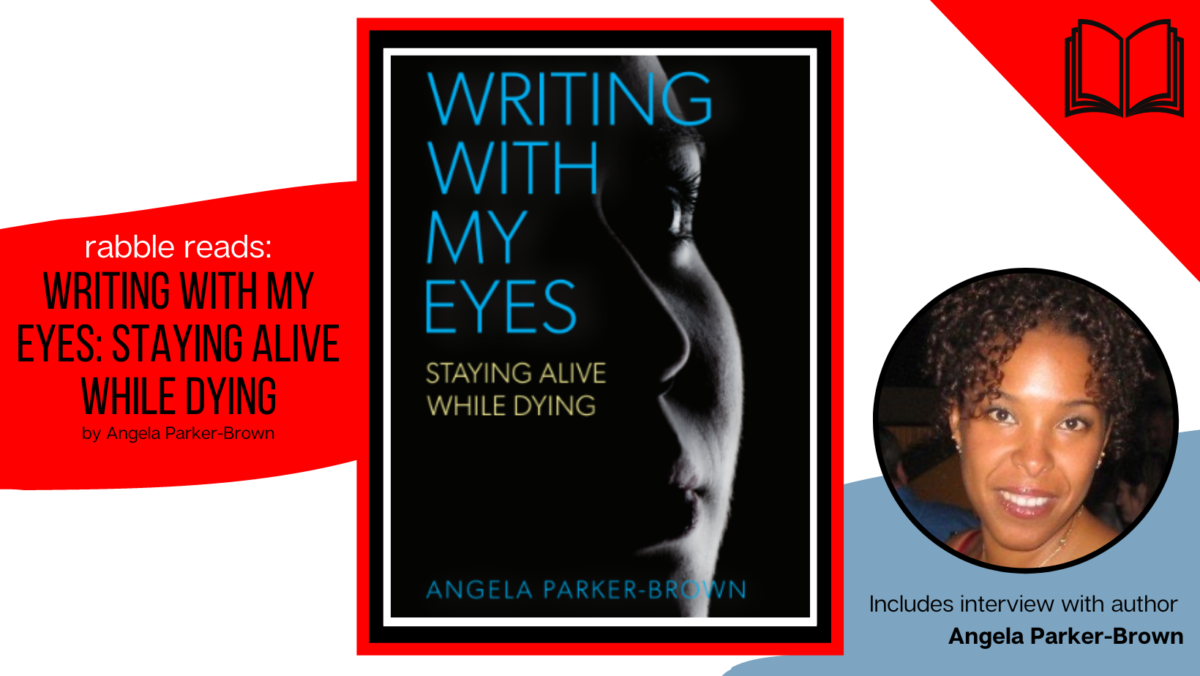A new memoir by a Nova Scotia woman about her journey navigating ALS is quite possibly the most important book you’ll read this year — a book written through, and with, the author’s eyes.
Angela Parker-Brown was 46 when she was diagnosed with ALS. A young, healthy Black woman, Parker-Brown is hardly a typical ALS patient. The disease isn’t commonly found in people under the age of 55, and white men are slightly more prone to contracting ALS.
Now in her early 50s, Parker-Brown can no longer move and requires round-the-clock care. But with her eye-gaze technology, known as PCEye, she can use a text-to-speech software that allows her to communicate, find a show on Netflix, and use social media all through the movement of her eyes.
The memoir, Writing with my Eyes: Staying Alive While Dying, captures Parker-Brown’s day-to-day life, while also offering a glimpse into her troubled childhood, an online relationship gone wrong, and most importantly, becoming a mother.
In an interview with rabble.ca using eye-gaze technology, Parker-Brown described the waiting game for her book’s release as “a bubble of anticipation.”
“I am excited, happy, nervous, scared, grateful, humbled, proud,” she said, sharing from an August 4 journal entry. “Once the waiting is over, I will never get this moment back again. When the waiting is over, will I want this moment back? Who knows, so I better enjoy this anticipation.”
Not only are Parker-Brown’s words profound, there is a certain magic in reading her story knowing that she chose each word more deliberately and thoughtfully than the average writer.
When asked about what she learned from writing her memoir, Parker-Brown joked that she “could write a book on this.”
“Writing this memoir has taught me that it’s okay to be me, the authentic me, which encompasses my entire past,” she said. “It’s taught me how damaging secrets are, but more importantly, how freeing the truth makes you feel. It’s taught me that I never want to stop learning and growing. Despite having ALS, I won’t let a life limiting disease stop me from aiming for full-capacity sparkle.”
To Parker-Brown, her memoir is a gift to her daughters Paris and Parker. The love she shows her daughters pores out of the page.
“This book means the world to me as I am able to leave a piece of myself with them,” she said. “Writing this book has taught me that I am enough.”
In her memoir, Parker-Brown writes of adapting to her changing role as a mother through the progression of her ALS, and the struggle of no longer being able to vocalize the love she has for her daughters.
“I honestly feel lucky to have been able to give myself to my girls in a way not many parents do,” she said, adding that she’s blessed and forever grateful for the opportunity to write a book.
While Parker-Brown exudes positivity and lives a life of gratitude, her book proves that finding peace is a long and often uncomfortable journey.
Pointing out that people know so little about ALS until it affects them or a loved one, Parker-Brown described it as “probably the worst disease a person can get.” With that in mind, there’s a few things she wants people to know about ALS.
Identified more than 150 years ago, ALS became internationally known in 1939 when American baseball star Lou Gehrig announced to the world that he was diagnosed with the disease — which is why ALS is commonly referred to as Lou Gehrig’s disease. Eighty years later, Parker-Brown noted that there are no government approved drugs or treatments to stop and reverse the effects of ALS.
“My friends, could you imagine if ALS was contagious,” she asked. “What if something in the disease flipped and made ALS contagious today? Would we have to wait another 153 years for a treatment or cure?”
Parker-Brown explained that many viable treatments being tested for ALS have been tied up in clinical trials for several years.
One of the most powerful parts of her books comes as Parker-Brown offers a candid observation: “Dying is easy and living is hard.”
“I simply mean that death in itself is easy,” she said. “I don’t mean the reason for one’s death, just the act in itself. Once death occurs, the people left behind are the ones who have the difficult part of moving on without their loved one or working their way through their grief.”
And in her usual positive fashion, Parker-Brown recommended that those facing tough times try taking things one day at a time and to focus on what brings you joy.
For her, it’s something as simple as the magic of a head scratch.
“Happiness is attainable in the face of adversity.”
Writing with my Eyes: Staying Alive While Dying is set to be released on Sept. 15.




